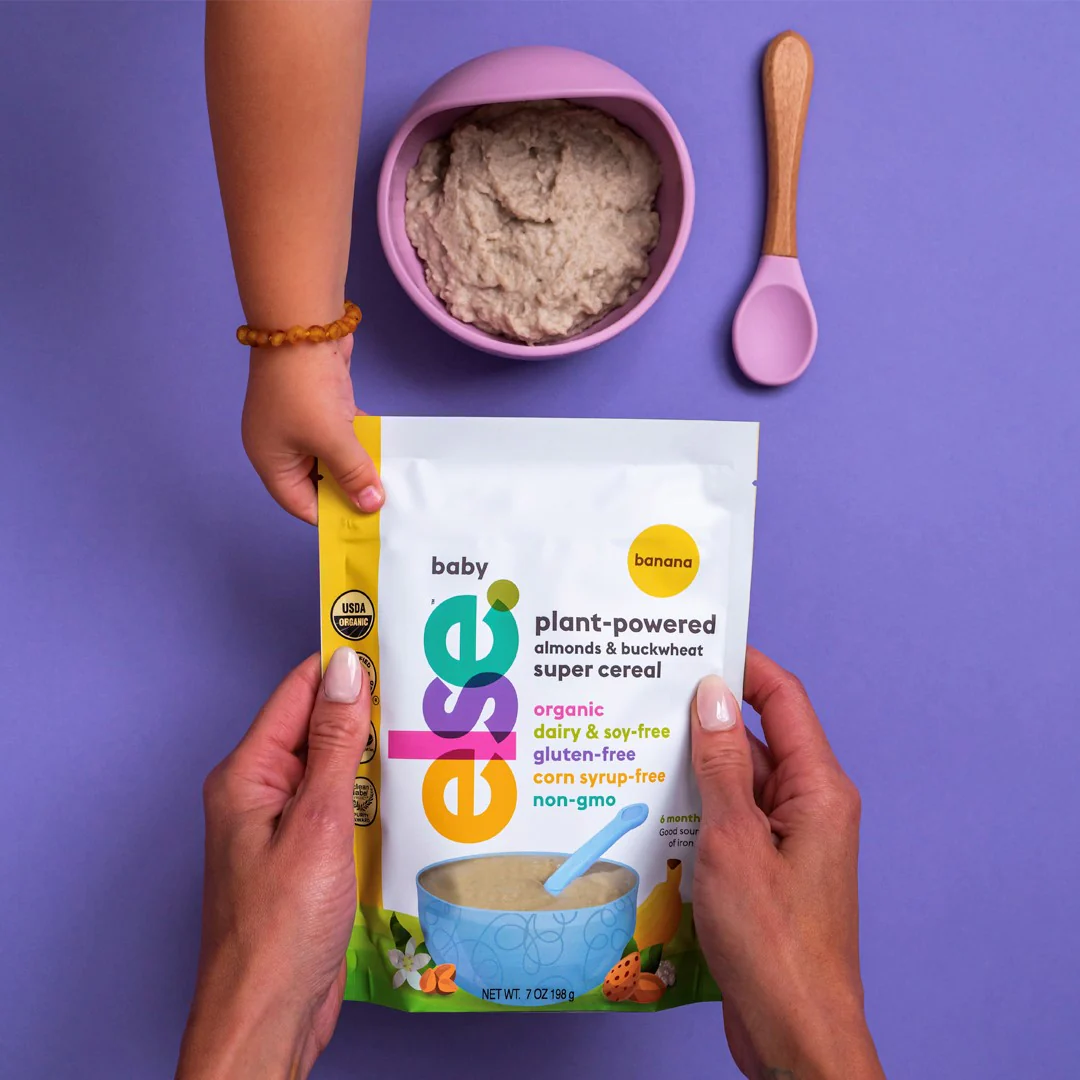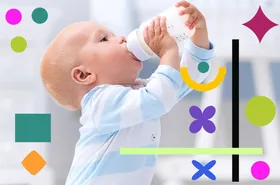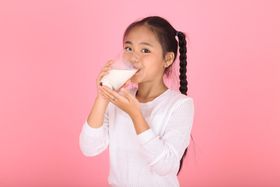Hidden Truth About Store Bought Baby Food
New moms, be warned! Research suggests some store-bought baby food may not be as healthy as it seems. Learn the truth and keep your LO safe.
Published September 5, 2024

When parents walk down the baby food aisle today, they see shelves packed with colorful jars, pouches, and snacks. With so many choices, parents often reach for store-bought options. It's convenient, especially when you're busy or can't always get fresh ingredients.
These foods are healthy—after all, they're made for babies, right?
Not all of them are, actually. Below, we will explore what's really in baby food, why it matters for your child's health, and how to make smart choices in the grocery store.
» Introduce your LO to solids with a clean label certified cereal
An Abundance of Baby Food Options
The infant and toddler food industry has surpassed expectations ever since the invention of “baby vegetable soup” in the early 1900s. [1]Today, store aisles and freezers display various options to fit any dietary needs and budget. Some families even order food for their little ones via subscription services.
Parents most commonly buy:
- Baby cereals
- Single food jars
- Combination food pouches
- Finger foods
- Snacks
These options are helpful for parents who rarely cook at home or don't live close to a fresh food market. Even those who swear by homemade baby food occasionally need the convenience that comes with store-bought items.
In the store, we all gloss over the label at the back of the product, assuming it's healthy because it's meant for babies.
The truth is, this may not always be the case.
» Check out our guide to essential nutrients for toddlers
A Nation of Snackers
In the US, we love our snack foods. Manufacturers didn't leave out babies and toddlers; they made something for them, too. 6–9-month-olds throughout the country practice their fine motor skills by chewing on puffs, fruit snacks, melts, or teething biscuits.
Some of these foods look just like chips and crackers that we adults eat, so our LOs can also participate in family snack times.
But do babies and toddlers need these kinds of snacks?
» Discover healthy school snacks you can make for your kid
WHO Official Baby Nutrition Recommendations
The World Health Organization (WHO) offers specific nutritional guidelines for infants and toddlers. [2] Here's a breakdown:
- Exclusive breastfeeding until your baby is six months old. If this isn't possible, you should offer a formula.
- You also shouldn't offer pureed food until your LO is six months old.
- Older infants and toddlers should eat three meals and one to two snacks daily.
» Still breastfeeding? Check out our guide to baby-led weaning
Additionally, the food types you offer should have protein, iron, calcium, and essential vitamins. You can find these nutrients in the following foods:
- Protein: Nut butter, beans, lentils, chickpeas, fish, eggs, poultry, meats, tofu
- Calcium: Yogurt, cheese, tofu, salmon
- Iron: Beans, eggs, chicken, meats, cereals, lentils, beans
- Vitamins A and C: Fruits and vegetables
- Vitamin D: Infant formula, vitamin D supplement if breastfeeding
These nutrients are crucial for growth, weight gain, and brain development. But you should avoid excess sugar and salt. Sugar occurs naturally in fruits and some vegetables, and many proteins already have some amount of salt. Adding more is unnecessary.
» Discover tips to help your kid gain weight
The Hidden Truth About Baby Food Quality
In 2023, the WHO evaluated the nutritional quality of infant and toddler foods sold at major US store chains. [3] The researchers looked at the ingredient list of the following foods:
- Infant cereals
- Non-refrigerated yogurt
- Cheese products
- Vegetable purees
- Packaged meals
- Finger foods
- Snacks
Surprisingly, only 40% of the products met WHO’s standards, with finger foods and snacks being the least nutritious.
The findings suggest that many of these products are high in added sugar, salt, and refined carbohydrates. The contents can contribute to obesity, heart disease, stroke, diabetes, and certain types of cancer. [4]
Additionally, the lack of protein and fiber in these snacks can lead to nutritional deficiencies, impacting your LO's overall health and well-being.
» Check out crucial factors when choosing toddler drinks
How To Avoid the Dangers of Added Sugar
The American Academy of Pediatrics (AAP) found that too much dietary sugar relates to childhood obesity and tooth decay. [5] This includes sweetened beverages like juice, flavored milk, and sodas. In the long term, it increases the risk of fatty liver, heart disease, and type 2 diabetes.
To prevent these problems, the USDA recommends that no more than 10% of an infant’s or toddler’s daily calories come from sugar.
So, how do you help your kid avoid unhealthy weight gain?
With that one question in mind, we have created Else's Baby Super Cereal. It's free from corn syrup, meaning it doesn't spike your little one's blood sugar levels. You won't have to browse online forums for hours on end looking for the healthiest option for your child.
But don't be fooled by sugar-free claims alone. Many products on the market are the result of heavy processing. You end up wasting time in the store reading the ingredients and checking online if they are safe for your LO.
Else is Clean Label Project Certified.
We guarantee our products are free from:
- Heavy metals
- Arsenic
- Corn syrup
- Flavorings
- Additives
- GMOs
- Dairy
- Gluten
- Soy
The Problem With Too Much Salt
Excess dietary salt irritates the kidneys, increasing the risk of heart disease and high blood pressure. [6] That's why the FDA lowered its daily salt intake recommendations for children. [7,8] The AAP’s position is similar, recommending less than 1200mg of salt daily for children under four. [9]
» Check out the best high iron foods for your kid
How to Avoid Unhealthy Ingredients
Based on the WHO’s study, parents should be more savvy when buying food for their kids. It's crucial to check labels for added salt and sugar in products like “puffs” or “melts” because they may not be as healthy as they seem.
On the other hand, bite-sized crackers are made from refined flour or starches; they also have more salt than the daily recommended amount.
Here are key points to remember if you're looking to buy snacks:
- Choose snacks that have at least one type of protein
- Avoid added sugar or salt if possible
- Food in its natural form is better than a processed version
- Fruit “snacks” often contain more sugar than fruit
- Vegetable “puffs” or “crisps” may not actually be made of vegetables
Suggestions for real food snacks include:
- Bite-sized cubes of soft-cooked carrots, green beans, or sweet potatoes
- Bite-sized cubes of banana or avocado
- Dry, unsweetened “O”-shaped cereal
- Yogurt
- Small portions of meal left-overs (fruit or veggie with a protein)
» Discover the best cereals for your baby's first food
The Hidden Truth: Is Store-Bought Baby Food Worth the Convenience?
So, you might think store-bought baby food is a lifesaver. It's convenient, it's easy, and there's a ton of variety. But hold on a second. There's a hidden side to it. Some of these foods have extra stuff in them – things like additives and preservatives—that might not be the best for your little one.
If you're worried about this, you have a few options. You can read labels really carefully and look for foods with the least amount of extra stuff. You can also try making your baby food at home.
That way, you know exactly what's going into your baby's tummy. And if you're still unsure, it's always a good idea to talk to your pediatrician. Remember, the most important thing is to give your baby the best possible nutrition. So take a minute to think about what's really best for them.
» Unsure which solids to start with? Try sugar-free baby cereal
References:
- “The History of Baby food - solid starts.” Available: https://solidstarts.com/history-of-baby-food/
- World Health Organization: WHO, “Infant and young child feeding,” Dec. 20, 2023. Available: https://www.who.int/news-room/fact-sheets/detail/infant-and-young-child-feeding
- D. H. Coyle, M. Shahid, K. Parkins, M. Hu, M. Padovan, and E. K. Dunford, “An evaluation of the nutritional and promotional profile of commercial foods for infants and toddlers in the United States,” Nutrients, vol. 16, no. 16, p. 2782, Aug. 2024, doi: 10.3390/nu16162782. Available: https://www.mdpi.com/2072-6643/16/16/2782
- K. L. Stanhope, “Sugar consumption, metabolic disease and obesity: The state of the controversy,” Critical Reviews in Clinical Laboratory Sciences, vol. 53, no. 1, pp. 52–67, Sep. 2015, doi: 10.3109/10408363.2015.1084990. Available: https://pubmed.ncbi.nlm.nih.gov/26376619/
- “American Academy of Pediatrics and American Heart Association Endorse Suite of Policies to Reduce Kids’ Consumption of Sugar,” Healthycildren.org. Available: https://www.healthychildren.org/English/news/Pages/Endorcement-of-Policies-to-Reduce-Consumption-of-Sugary-Drinks-by-Kids.aspx
- “We don’t need to add salt to food,” HealthyChildren.org. Available: https://www.healthychildren.org/English/healthy-living/nutrition/Pages/We-Dont-Need-to-Add-Salt-to-Food.aspx
- “Sodium in Your Diet.” Available: https://www.fda.gov/food/nutrition-education-resources-materials/sodium-your-diet
- “Dietary Guidelines for Americans 2020-2025.” Available: https://www.dietaryguidelines.gov/sites/default/files/2021-03/Dietary_Guidelines_for_Americans-2020-2025.pdf
- M. Jenco, Ed., “Health officials detail proposed changes to food labels, school meals to reduce sugar consumption,” AAP Publications. Available: https://publications.aap.org/aapnews/news/27256/Health-officials-detail-proposed-changes-to-food
Disclaimer: The content and advice provided in this article is for informational purposes only and is not a substitute for medical diagnosis, treatment, or advice for specific medical conditions. Always consult a pediatrician to understand your baby's needs.










